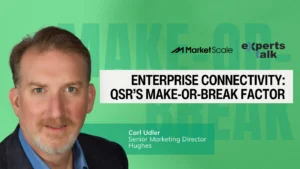Food Industry Automation Trends: Greater Adoption and New Applications
The food industry underwent a monumental change in the last year. The demand was still high, but supply chains, labor challenges and other factors made production more difficult.
Looking for big-picture solutions to these problems, more food manufacturers adopted automation technology, something it had been slow to do before 2020.
Greater adoption, prompted by the pandemic, is certainly the biggest food industry automation trend. In addition to more system implementations, the food industry is also embracing cobots and machine vision on the plant floor.
Cost and Expertise Barriers Are Lowering, Fueling More Adoption
Robotics and automation technology aren’t new, but you wouldn’t find these in most food industry plants outside of the largest, most financially backed locations just a few years ago. Price and lack of knowledge on how to integrate these tools stood in the way.
Costs for the technology decreased by around 2018, and the ROI for installing them made a lot of fiscal sense. However, cost remains the most significant obstacle to full-scale implementation. You can realize ROI, but it doesn’t occur overnight. It’s a long-term investment that yields long-term advantages.
Automation became more prevalent, but it was still a trickle. COVID-19 was the accelerator for those manufacturers that were in wait and see mode. The time for waiting was over. Research from the Robotic Industries Association (RIA) confirmed the trend. In 2020, food and consumer manufacturers increased their robotics orders by 56% over the prior year. It was the first time in history that non-automotive orders surpassed automotive ones.
Food industry leaders are now asking, “Can we use a robot here?” That’s because the availability is much more adaptive and versatile. For example, the food industry was hesitant to use grippers for picking fruits and vegetables because they often damaged these soft items. Now, there are a variety of grippers that can do the work without wasting product.
Cobots Bridge Labor Gaps and Offer
Cobots, or collaborative robots, are another hot trend in food industry automation. They are convenient because they don’t need industrial-level electricity, which also means they are more affordable. As a result, they are in high demand. An Automation World survey found that 56% of those planning to buy robots in the next year will make it a cobot.
Interactivity between operator and machine creates a new work environment. It could enhance worker safety, up productivity, lead to employee retention since these jobs are likely to be more skilled, and more. Further, companies can design intelligent systems in their facilities that enable robots and humans to work together in a streamlined manner.
There are many applications for cobots in the food and beverage industry, from processing to packaging to distribution.
Machine Vision Ensures Accuracy
Another automation tool supporting the food industry is machine vision, which uses lasers to verify dimensions for packaging. This technology also can detect if the packaging is open or irregular, which would be major quality assurance issue. On a line, if the machine vision identifies this, it will move to a separate line and not go out for delivery. It’s efficient and much faster than manual processes that require humans.
Is Automation Right for Your Food Processing Plant?
Food industry automation is officially mainstream. The boost from COVID-19 likely accelerated adoption by several years. In addition, food manufacturers are using smart automation technology to operate as optimally as possible.
If you are ready to design your automation solution, we can help. Find out how we support the food and beverage industry today.
Follow us on social media for the latest updates in B2B!
Twitter – @MarketScale
Facebook – facebook.com/marketscale
LinkedIn – linkedin.com/company/marketscale









